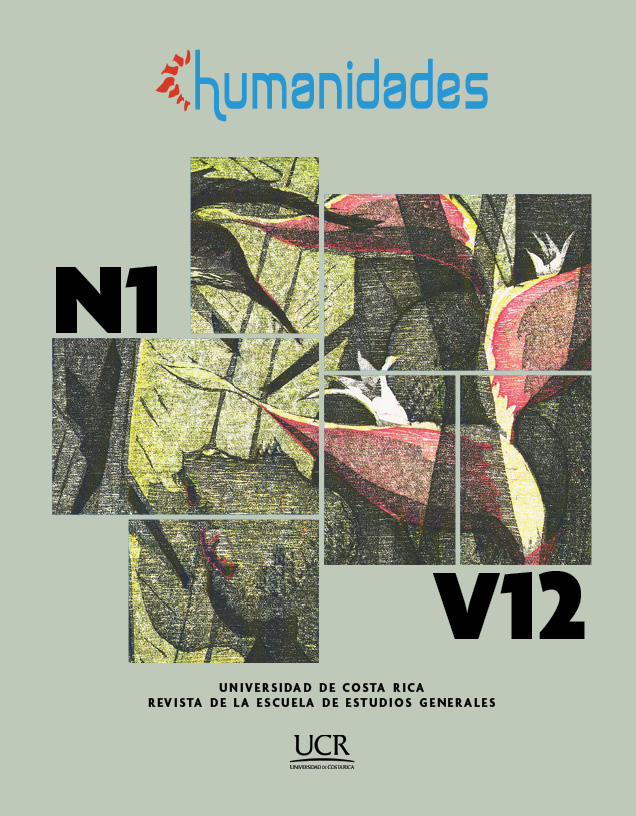Abstract
The aim of this paper is to develop the centrality of the category Erfahrung [experience] within Critical Theory, in regard to the possibilities of a critical cinema. In methodological terms, , this paper outlines a genealogy in this tradition that takes as its origin a dialectical notion of Erfahrung held by Walter Benjamin (introducing secondarily insights from Siegfried Kracauer and Theodor W. Adorno); and that continues in the appropriation and actualization of the category present in the theoretical and cinematographic work of Alexander Kluge. Rather than providing a gnoseological or political sense, this approach to experience lets us showing a double valence of the concept with significant consequences for the cultural sphere. Thus, this investigation argues that this category of Erfahrung allows critical thinkers both to identify the atrophy or loss of experience in the context of reification and repetition of the culture industry and to suggest a transformation of the horizon of experience in which cinema could participate. In consequence, put in Klugelian terms, the argument contends that cinema as a public countersphere would make it possible to mobilize the rest of uncolonized experience that survives in the fantasy of human beings and to activate another venue for social experience through public debate and discussion.
References
Adorno, T. W. (2003). El curioso realista. Sobre Siegfried Kracauer (A. Brotons, Trad.). Akal.
Adorno, T. W. y Benjamin, W. (1998). Correspondencia (1928-1940) (J. Muñoz y V. Gómez, Trads). Editorial Trotta.
Adorno, T. W., y Horkheimer, M. (2009). Dialéctica de la Ilustración (J.J. Sánchez, Trad). Editorial Trotta.
Benjamin, W. (1991). El narrador (R. Blatt, Trad.). Taurus.
Benjamin, W. (2003). La obra de arte en la época de su reproductibilidad técnica (A. Weickert, Trad.). Ítaca.
Benjamin, W. (2007b). Sobre el programa de la filosofía venidera (J. Navarro Pérez, Trad.). Abada.
Benjamin, W. (2007a). Experiencia y pobreza (J. Navarro Pérez, Trad.). Abada.
Benjamin, W. (2010). Alemanes (J. Navarro Pérez, Trad.). Abada.
Buck-Morss, S. (2011). Origen de la dialéctica negativa. Theodor W. Adorno, Walter Benjamin y el Instituto de Frankfurt. (N. Rabotnikof, Trad). Eterna Cadencia.
Buck-Morss, S. (2014). Estética y anestésica: una reconsideración del ensayo sobre la obra de arte. (pp. 169-221). La Marca Editora.
Cabot, M. (2008). Sobre los medios técnicos y la renovación de tradiciones. Walter Benjamin y el concepto de ‘experiencia’, pensado desde la estética. En: G. Amengual, M. Cabot y J. Vermal (Eds.), Ruptura de la tradición. Estudios sobre Walter Benjamin y Martin Heidegger. Trotta.
Cabot, M. (2011). La crítica de Adorno a la cultura de masas, Constelaciones: Revista de Teoría Crítica, 3(3), 130-147. http://constelaciones-rtc.net/article/view/752
Cavell, S. (2017). El mundo visto. Reflexiones sobre la ontología del cine (A. Fernández Díez, Trad). UCO Press.
Deleuze, G. (1984). La imagen-movimiento: estudios sobre cine 1 (I. Agoff, Trad). Paidós.
Deleuze, G. (1987). La imagentiempo, estudios sobre cine 2 (I. Agoff, Trad.). Paidós.
Eco, U. (1968). Apocalípticos e integrados (A. Boglar, Trad.). Lumen.
Groß, B. y Morsch, T. (2018). Handbuch Filmtheorie. Springer VS. https://doi.org/10.1007/978-3-658-09514-7
Habermas, J. (1994). Historia y crítica de la opinión pública: la transformación estructural de la vida pública (A. Domѐnech, Trad). Gustavo Gili.
Hansen, M. (1993a). Early cinema, late cinema: permutations of the public sphere, Screen, 34(3), 197-210.
Hansen, M. (1993b) Foreword. En A. Kluge y O. Negt. Public Sphere and Experience. Toward an Analyisis of the Bourgeois and Proletarian Public Sphere (pp. 9-41). University of Minnesota Press.
Hansen, M. (2012). Cinema and Experience. Siegfried Kracauer, Walter Benjamin and Theodor W. Adorno. University of California Press.
Ipar, E. (2008). El doble sentido de la técnica en la cultura de masas, adorno y la dialéctica del cine. Question/Cuestión, 1(20). https://perio.unlp.edu.ar/ojs/index.php/question/article/view/691
Jay, M. (2009). Cantos de experiencia: variaciones modernas sobre un tema universal (G. Ventureira, Trad). Paidós.
Juárez, E. A. (2016). Entre promesas: resonancias del concepto de industria cultural. Revista Observatório, 2(4), 61-84.
Kluge, A. y Negt, O. (2001). Öffentlichkeit und Erfahrung: zur Organisationsanalyse von bürgerlicher und proletarischer Öffentlichkeit. Frankfurt am Main.
Kracauer, S. (2008). La fotografía y otros ensayos. El ornamento de la masa I. (L. Carugati, Trad.). Gedisa.
Kracauer, S. (2018). Ginster. Escrito por él mismo. (M. Vedda, Trad.). Las cuarenta.
Mann, T. (2006). La montaña mágica (I. García, Trad). Edhasa.
Vedda, M. (2011). La irrealidad de la desesperación. Estudios sobre Siegfried Kracauer y Walter Benjamin. Gorla.
Weber, T. (2014). Experiencia. En M. Opitz y E. Wizisla (Eds.), Conceptos de Walter Benjamin. (C.I. Pivetta, Trad.). Las cuarenta.



